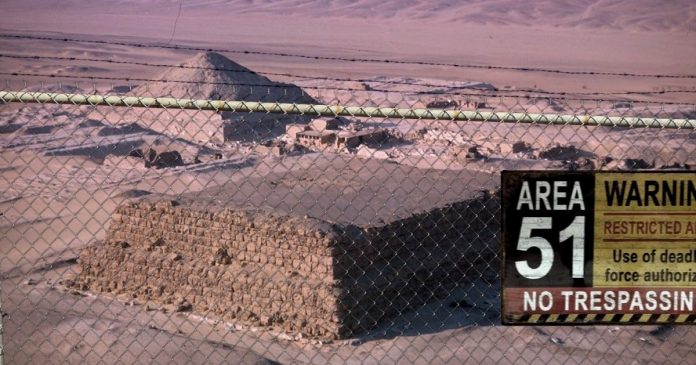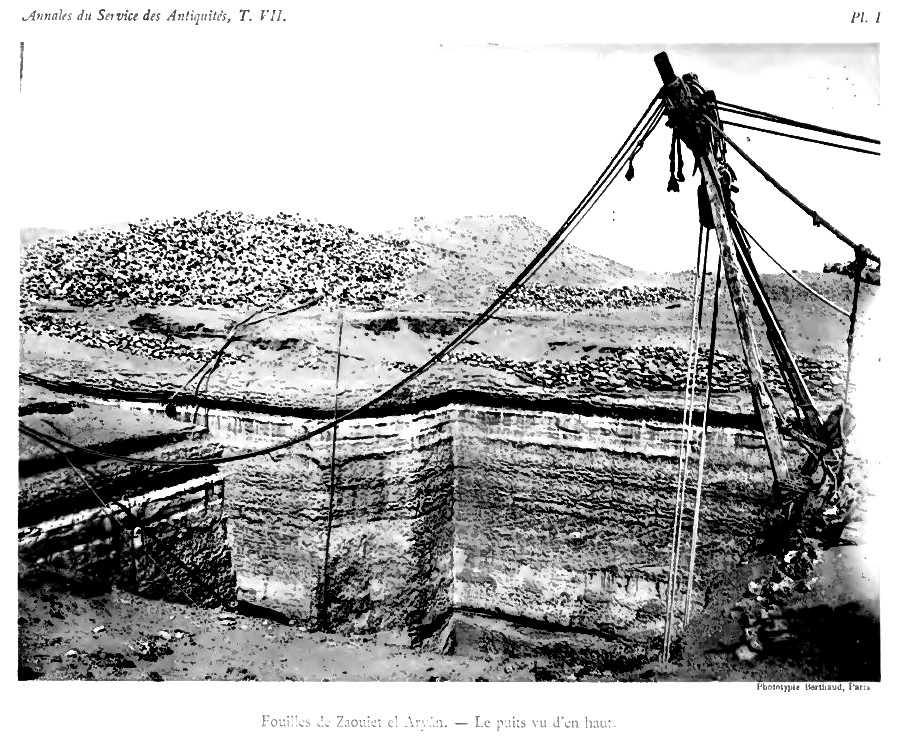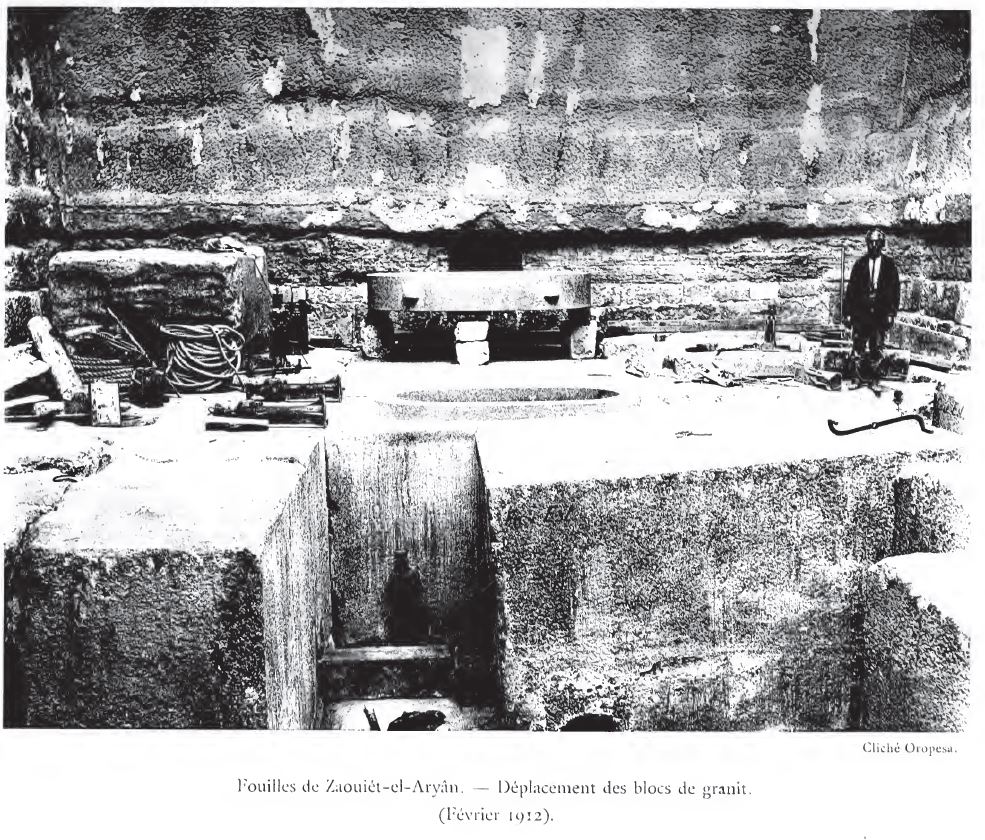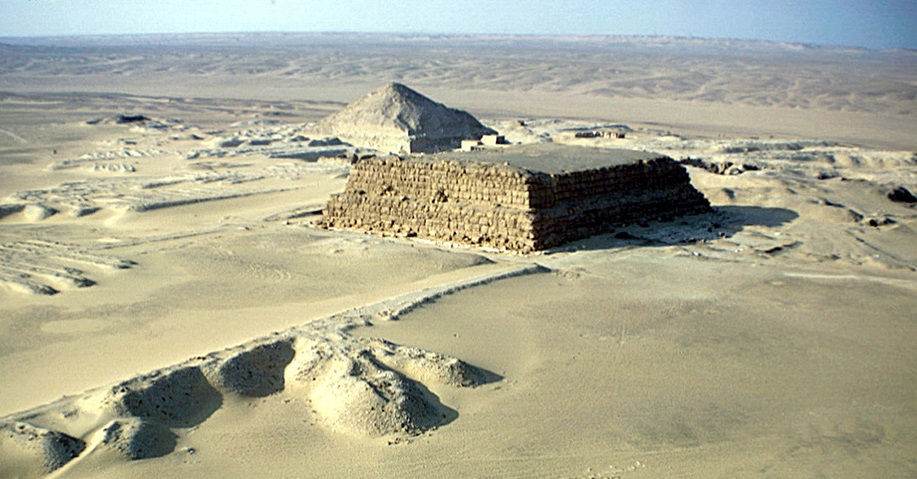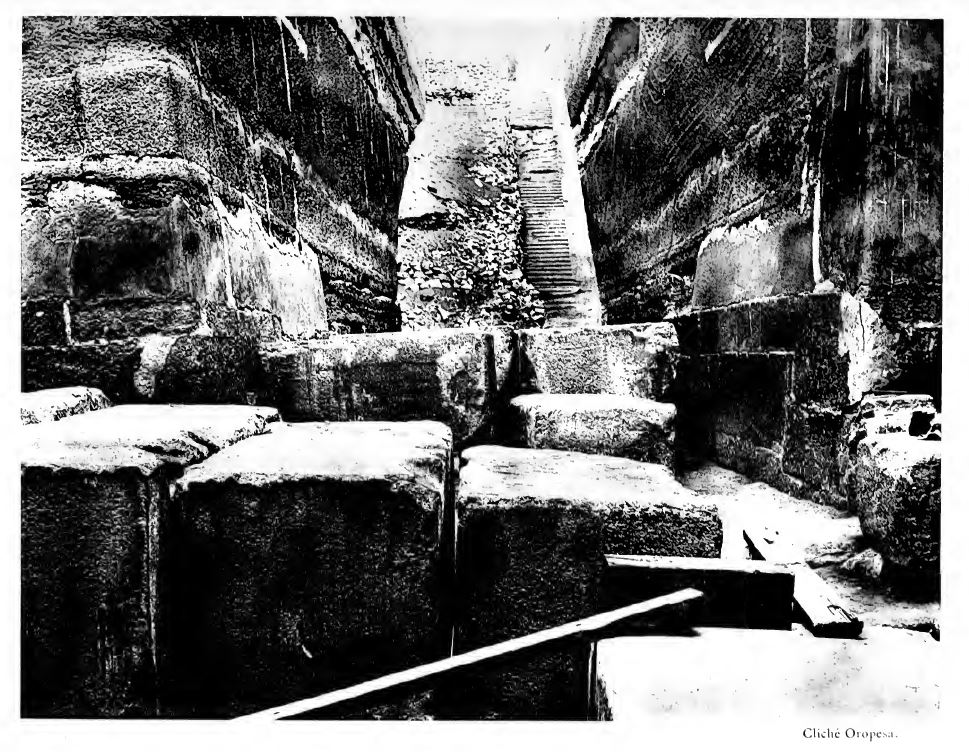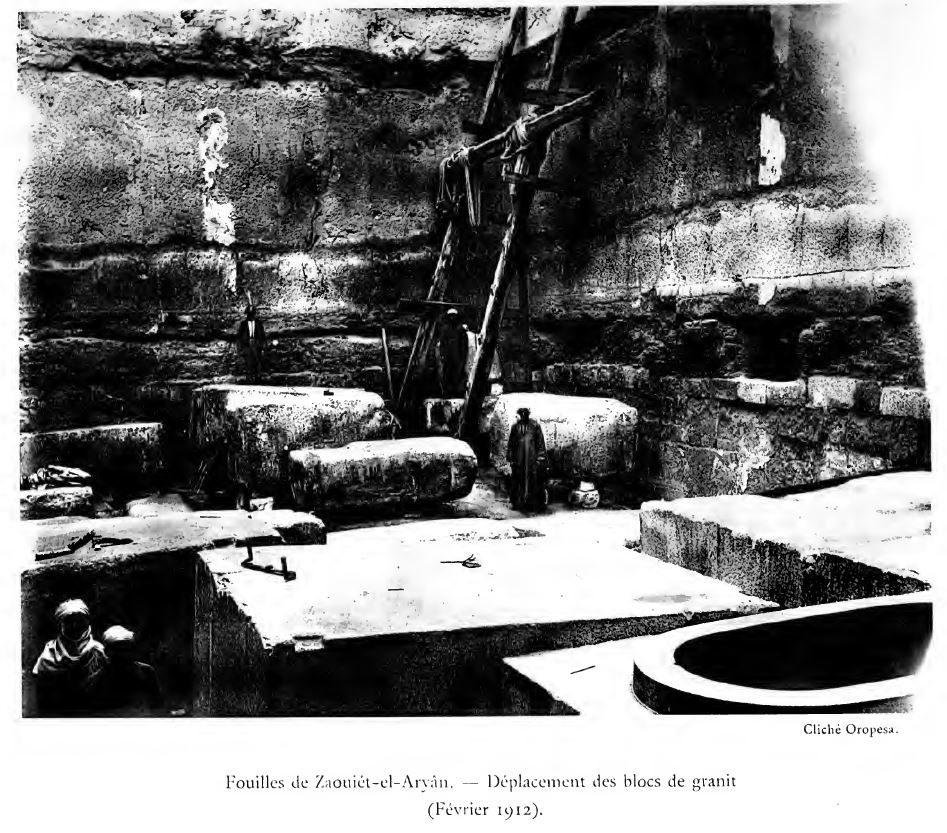The Unfinished Pyramid of Zawyet El Aryan, recently dubbed Egypt’s Area 51, captivates historians and conspiracy theorists alike with its restricted access and unresolved mysteries. Nestled between the renowned Giza pyramids and the quieter Abusir complex, this site hails from the Fourth Dynasty, around 2700 to 2600 BC. Archaeologists tentatively link it to Pharaoh Baka or Bikheris, a ruler whose short reign left little mark on history. Unlike completed pyramids, this one remains a skeletal structure, with only its underground chambers showcasing advanced engineering. Recent buzz highlights its deep shaft, oval granite container, and restricted status, sparking theories about hidden purposes. Yet, archaeological evidence suggests a standard pyramid design abandoned before completion, offering a glimpse into ancient Egypt’s ambitious but unfinished dreams.
Initial Discovery of the Unfinished Pyramid
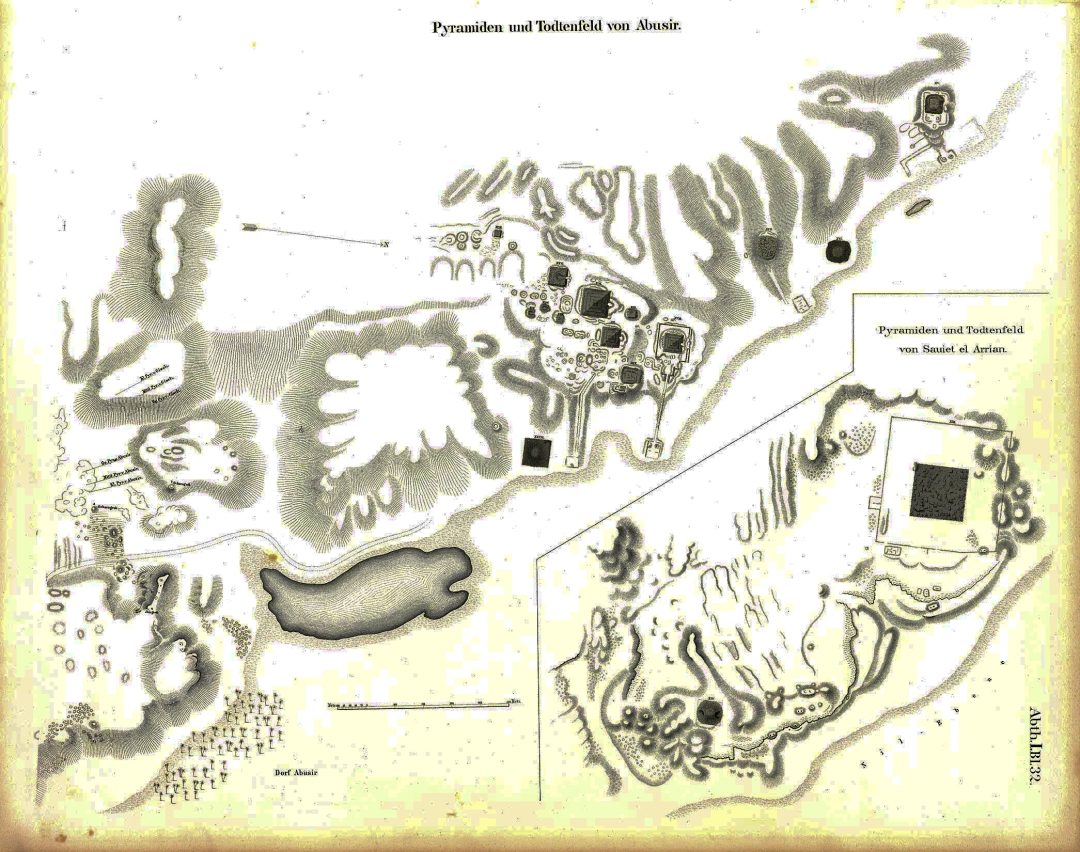
Monuments from Egypt and Ethiopia according to the drawings made during the scientific expedition sent to these countries by His Majesty the King of Prussia, Friedrich Wilhelm IV, and carried out in the years 1842–1845 by orders of His Majesty {{PD-US-expired}}
In the mid-19th century, German Egyptologist Karl Richard Lepsius conducted the first formal survey of the Unfinished Pyramid at Zawyet El Aryan (middle right). His map designated a large square, he designated it “Pyramid XIII” in his expedition catalog. This early documentation marked the site’s entry into scholarly records, though its true function and ownership remained uncertain. Pink and grey granite blocks, scattered around the site, hinted at a grand construction project that never materialized. Travelers in the 1840s referred to it as the “Great Pit of Zawyet El Aryan,” surrounded by mastabas, flat-roofed tombs that suggested a larger necropolis. Located just eight kilometers from Giza and close to Abusir, the site intrigued Egyptologists, who speculated about its connection to the Old Kingdom’s royal burial grounds.
These early observations sparked curiosity but lacked deep investigation. The pit’s size, combined with its proximity to other pyramid complexes, suggested it was meant for a significant ruler. However, its isolation in the desert kept it obscure, with no major exploration until the 20th century. The scattered granite and mastabas pointed to a planned royal tomb, possibly for a pharaoh lost to history. These initial findings laid the foundation for later excavations, setting the stage for uncovering the pyramid’s secrets.
First Excavation and Archaeological Discoveries
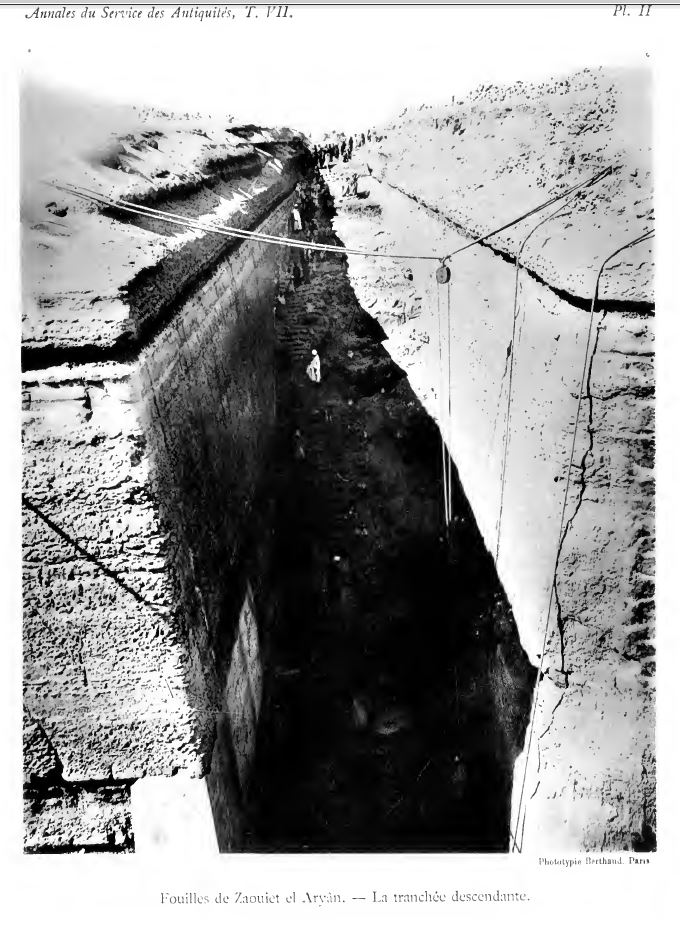
In 1904 and 1905, Italian archaeologist Alessandro Barsanti spearheaded the first systematic excavation of the Unfinished Pyramid of Zawyet El Aryan. His team cleared layers of sand and rubble from a deep shaft, revealing a descending staircase with 32 steps, meticulously carved from the bedrock. This staircase stretched 23 meters downward, leading to a corridor that opened into a subterranean chamber.
Image Source: Annales du service des antiquités de l’Égypte T. VII
The chamber’s floor, paved with massive granite blocks, each up to 4.5 meters long, 2.5 meters thick, and weighing nine tons, showcased the builders’ engineering prowess. At the chamber’s center rested an oval granite sarcophagus, or tub, measuring four meters long, 2.3 meters wide, and 1.9 meters high. Its unsealed lid lay nearby, and the absence of a body or artifacts puzzled the team.
A seal near the sarcophagus bore the name “Baka,” suggesting a link to a Fourth Dynasty pharaoh. The chamber’s walls, marked by rough tool cuts, indicated that construction stopped abruptly. Barsanti hypothesized that additional passages might extend beyond the chamber, a common feature in pyramid complexes. However, World War I interrupted further exploration, leaving his sketches and photographs as primary records. These findings revealed sophisticated craftsmanship, with granite sourced from Aswan, similar to Giza’s pyramids, and raised questions about why the project halted.
Context Within Egypt’s Pyramid Network
The Unfinished Pyramid of Zawyet El Aryan sits within a broader tapestry of ancient Egyptian burial sites, anchoring the Zawyet El Aryan necropolis. This area includes five mastabas and another incomplete structure, the Layer Pyramid, attributed to Third Dynasty Pharaoh Khaba. This places the site in use from the Third to Fourth Dynasties, a pivotal time when pyramid designs evolved from stepped to smooth-sided forms. Giza’s monumental pyramids, including Khufu’s Great Pyramid, lie eight kilometers to the north, while Abusir’s Fifth Dynasty pyramids rest to the south. This strategic location suggests Zawyet El Aryan served as a royal burial ground during a period of architectural experimentation.
The site shares engineering techniques with Giza, such as the use of Aswan granite and ramp systems for transporting heavy stones. The Unfinished Pyramid of Zawyet El Aryan reflects the era’s ambition to create eternal monuments for divine rulers, yet its abandonment signals a shift toward smaller, more refined pyramids in later dynasties. Recent discussions speculate about its restricted status, with some users proposing it hides advanced ancient technology or secret chambers. Mainstream archaeology, however, ties it to standard pharaonic practices. Viewing it as a royal tomb left incomplete due to practical constraints.
Substructure and Alignment with Pyramid Design
The underground structure of the Unfinished Pyramid of Zawyet El Aryan mirrors the layout of classic Old Kingdom pyramids. A descending passage, formed by a 32-step staircase and a corridor, leads to a deep burial chamber. Much like the design of Djoser’s Step Pyramid at Saqqara. The chamber, paved with heavy granite blocks, centers on the oval granite sarcophagus, embedded in the floor. A feature that sets it apart from movable sarcophagi in other pyramids. Scholars debate whether this was a true sarcophagus or a symbolic vessel.
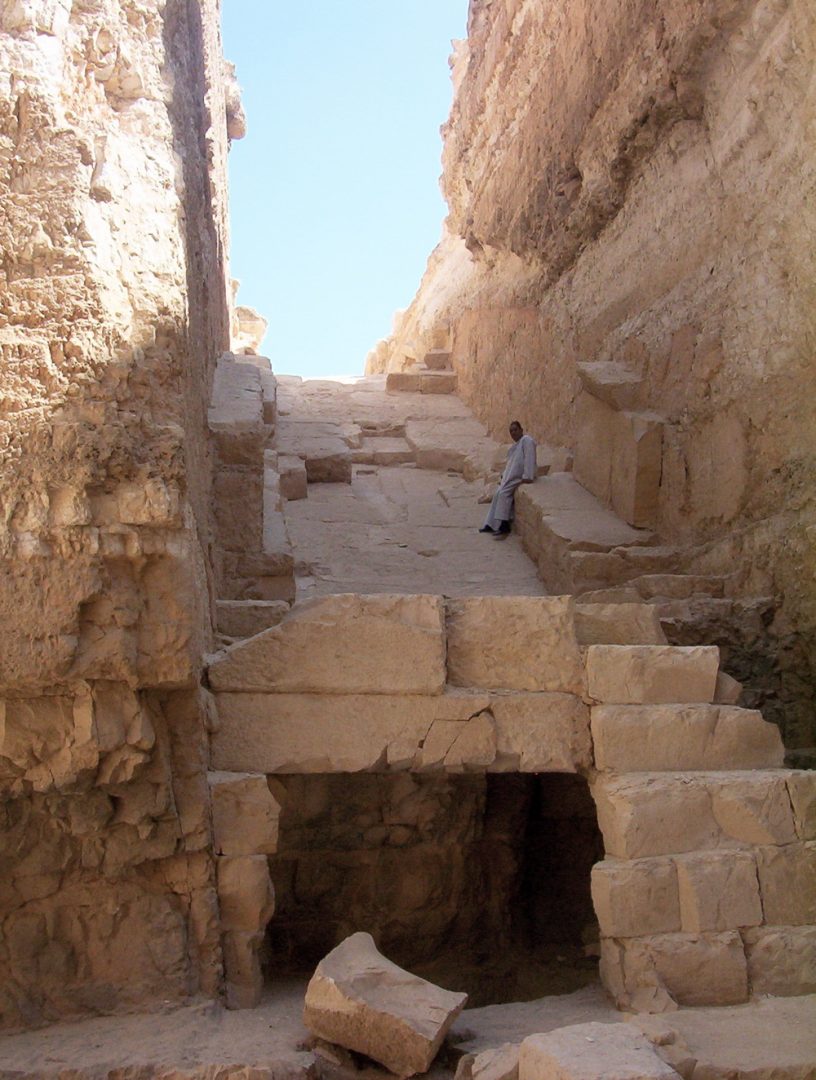
But its design aligns with burial chambers in other unfinished pyramids, such as Pyramid of Djedefre. (above) Image Open Source
The passage’s north-south orientation follows the standard alignment for royal tombs, ensuring cosmic harmony. Barsanti suspected unexcavated passages might connect to additional rooms, such as antechambers or storage spaces, common in pyramid complexes. The bedrock base, carved to support a smooth-sided pyramid with a 52-degree slope, mirrors the Great Pyramid’s design. These features show that the Unfinished Pyramid of Zawyet El Aryan was planned as a full-scale pyramid. Thus fitting seamlessly into the evolution of Egyptian architecture from stepped to true pyramids.
Reasons for Abandonment
Several factors likely contributed to the abandonment of the Unfinished Pyramid of Zawyet El Aryan. The short reign of its attributed pharaoh, possibly Baka, may have left insufficient time to complete the massive project. In ancient Egypt, a ruler’s death often halted construction, as successors focused on their own monuments. Structural challenges could have played a role. Unstable bedrock or cracks may have rendered the site unsuitable for a towering pyramid. Resources, including labor and materials, were likely diverted to Giza’s colossal projects, which dominated the Fourth Dynasty’s efforts.
Political shifts also factored in. Dynastic changes frequently led to neglected tombs, as new rulers prioritized their own legacies. The absence of a superstructure, with only the underground chambers completed, supports this theory. Alternative theories suggest esoteric reasons. Such as the pyramid serving a purpose beyond burial, perhaps tied to advanced technology or rituals. However, archaeological evidence points to practical explanations. Those being resource scarcity, political upheaval, or geological issues, as the primary causes of abandonment.
Restoration for Hollywood’s Spotlight
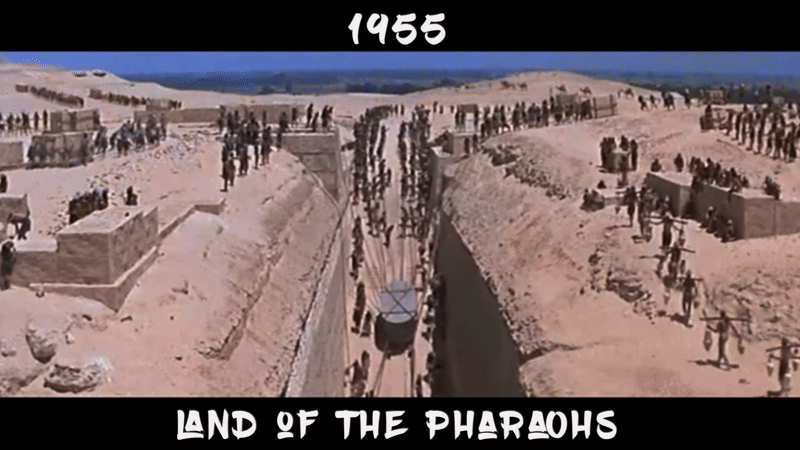
In 1955, the Unfinished Pyramid of Zawyet El Aryan briefly regained attention when Hollywood director Howard Hawks chose it as a filming location for “Land of the Pharaohs.” The site’s authentic ancient setting made it ideal for depicting pyramid construction. Film crews cleared the pit, built temporary ramps, and added props to recreate a bustling construction scene. Starring Jack Hawkins and Joan Collins, the movie portrayed pharaonic life, with the pyramid standing in as a fictional royal tomb. After filming, the site was left as found, with no permanent preservation efforts.
This temporary restoration highlighted the site’s impressive scale, and photographs from the set provide rare glimpses of areas now inaccessible. Clips shared on X amplify the site’s mysterious aura, with some users likening its restricted status to an “Area 51” cover-up, fueled by its cinematic history and current inaccessibility.
Current Restricted Status and State of Decay
Since 1964, the Unfinished Pyramid of Zawyet El Aryan has been off-limits, situated within a military zone controlled by Egypt’s government. Archaeologists and tourists cannot access the site, and military buildings now encroach on the ancient necropolis. Reports describe the pit filled with trash, overgrown with vegetation, and suffering from water damage that erodes its granite blocks. No preservation efforts are underway, leaving the site in a state of accelerating deterioration.
This restricted status fuels alternative history discussions, particularly on X, where users call it Egypt’s Area 51 and speculate about hidden underground networks, advanced artifacts, or even extraterrestrial connections. A 2025 Daily Mail article mentioned a possible T-shaped structure beneath the site, intensifying online debates. Mainstream archaeologists, however, emphasize the need for access to study and protect the site, warning that its condition worsens yearly. The Unfinished Pyramid of Zawyet El Aryan remains a locked enigma, its secrets buried under military control and the ravages of time.
Conclusion
The Unfinished Pyramid of Zawyet El Aryan stands as a testament to ancient Egypt’s architectural ambition and the fragility of human plans. Its incomplete state, restricted access, and archaeological treasures continue to captivate, blending fact with speculation. As calls for openness grow, this mysterious site holds untapped potential to reveal more about the Old Kingdom’s rulers and their monumental dreams.
Enjoyed this read check out Why Ethical Skeptics Giza Flood Hypothesis is all Wet

